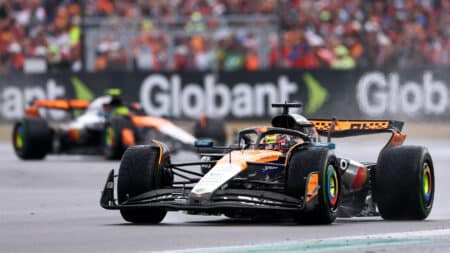
Horner's departure shows age of the maverick F1 boss is over
Christian Horner has now left Red Bull, the last of a certain breed of F1 team principal
For years people like me have been moaning about the decline of manual gearboxes in the cars we like to drive, or at least would like to drive if we could afford them.
It has been a while since it was possible to buy a Ferrari without paddles sprouting from its steering column and the same can now be said for all-new Lamborghinis and Maseratis. Porsche hasn’t offered a manual 911 GT3 since the 997 era, Aston Martin has binned manual gears for its best car – the V12 Vantage – while McLaren hasn’t built a manual car since the F1 20 years ago. As for the likes of Bentley, you may know better than me, but I’d wager the last time you were able to buy a Crewe-built car with three pedals was in the 1950s. You can’t even buy a manual AMG Mercedes.
The reason is simple and hard to argue against: overwhelmingly, the people who buy these cars don’t want manual gears, so manufacturers can perhaps be forgiven for electing not to spend money on transmissions its customers won’t buy. The truth is that automatic gearboxes, both those with double clutches and torque converters, are now so good the cars to which they are fitted are both faster and more frugal than would be their manual counterparts, on paper at least. In reality this is smoke and mirrors because a manual transmission is still lighter and more efficient than any equivalent automatic, but because its shift points can’t be programmed to fool the idiotic testing cycle used to determined fuel consumption and CO2 outputs, autos can be made to look more economical and less environmentally unfriendly than manuals.
So why, then, are car makers starting to rethink their decision to rid themselves of the manual gearbox? Jaguar, which had not made a manual sports car since the very early XJS – or if you don’t think that qualifies, the E-type – suddenly and out of nowhere announced it was putting a stick shift into the F-type. Next Porsche creates the new Cayman GT4 and announces it will be only available with manual gears. Then Andreas Preuninger, the man responsible for all Porsche GT product, let’s me know that ‘I have the board’s ear’ on the subject of making manual gears available for GT3s again.
What’s more, I know of two other manufacturers who have told me – in confidence annoyingly enough – that manuals are back on their agenda. One will impress you, the other will amaze you and while one is merely thinking hard about it, the other is committed to it.
The odd thing is I don’t detect any great realignment of public opinion behind the fitment of manual gears to high-end sports cars and supercars. The truth in most cases is that these cars are bought more by people who want to look good than drive hard. By both allowing you to change like a racing driver while actually making the business of driving easier, paddle shifts offer a win/win solution to fashion victims who either can’t or can’t be bothered to changed gear smoothly. And they’re quicker around the Nürburgring too, as if that actually mattered.
So why, despite this apparent lack of demand, are car companies now getting interested by manuals again? It seems it’s all just marketing. Jaguar told me it was building a manual F-type because ‘it was the right thing to do’ while accepting a very small proportion of cars would be so equipped. Porsche says it made the Cayman GT4 manual to provide its customers with a choice, though a real choice would have been to offer an automatic too.
I think in fact that they’ve realised there is something authentic, ‘proper’ for want of a better word, in having a manual available in such cars. Even if few or any are actually sold, the fact that the customer could buy one if he or she wanted to sends out a strong message about the company’s values. Like Radio 3 and the rear seats of an Audi TT, few make use of them, but most like to know that they’re there.
To me the reason is unimportant. In this era where we are removed by degrees with every successive generation from the actual experience of driving, anything that makes us feel more connected to our machines counts as a good thing.
There is a bigger picture here too. Indeed I think we may be at a turning point in cars designed for the enthusiast but have yet to realise it. The drive for weight reduction came late but is here and now in full swing, the strides made in providing proper feel for electric steering have been massive, the noise and response of turbo engines have advanced to a point unimaginable even ten years ago and now manuals appear on the point of making a comeback, however limited in scope that may be. It seems the death not just of three-pedal transmissions, but proper drivers’ cars may indeed have been greatly exaggerated.

Christian Horner has now left Red Bull, the last of a certain breed of F1 team principal

Was Oscar Piastri the real winner in the long run after Silverstone? asks James Elson

Lewis Hamilton hadn't won in almost three years – and then produced a sensational victory at Silverstone 2024. James Elson explains why it was his best ever

Describing this year's championship race as a 'battle' might be slightly over-egging it, writes James Elson